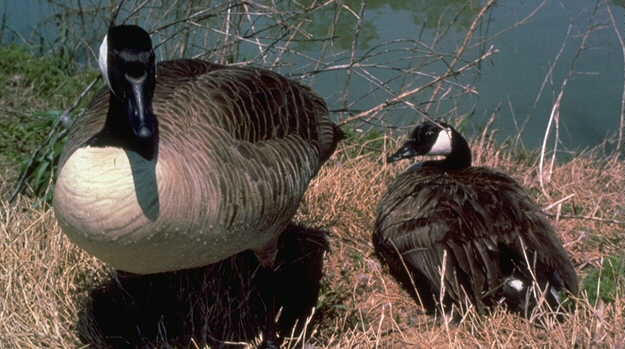Canada Geese


The sight of Canada geese as they honk their way across the sky in "V" formation tells us the change in seasons. The Canada geeseís V formation helps the flock get through the sky, since the head goose gets the most wind pressure while the geese at the back get less pressure which makes them fly easier. The lead goose constantly tires out so the geese change positions so each of them get an equal amount of work. Among the first to arrive north in spring, they are among the last to leave as winter returns. Few birds form family units like Canadas. They can be seen in huge flocks of the thousands but sometimes they foul parks, destroy private lots and block traffic so they must be taken elsewhere. Humans always try their best to get rid of them, for example, putting out signs to warn the public that if they feed the geese, they'll face a fine(though it usually doesn't work), take their food away, shoo them away, use fireworks, shoot them, hunt them down, feed them poisons, and so on. So far, they don't really succeed.
They mate for life and both parents raise the young. The young are little balls of yellow fluff with brown and black markings. Cute and adorable, and a lure for most young children, but when bothered, the parents can get quite protective. All Canadas have a grayish body and a black head and neck with a distinctive white cheek patch, but there are numerous races or subspecies with substantial differences in weight and size. Smaller races are about the size of a large duck, while larger races can exceed nine kilograms with a wingspan of more than a metre. Their sex is hard to distinguish, since both are well camouflaged, so probably size is how you tell them apart.
Populations are generally increasing, partly because of habitat restoration and partly because they adapt superbly to the presence of man-feeding on waste grain in crop lands, nesting in urban areas and grazing on lawns. They were considered endangered in the early 1900ís and they multiplied faster than the people thought. The Canada geese are very protective over their young, hissing and biting predators. Canada geese used to be hunted to extinction until people saved reserves for them.